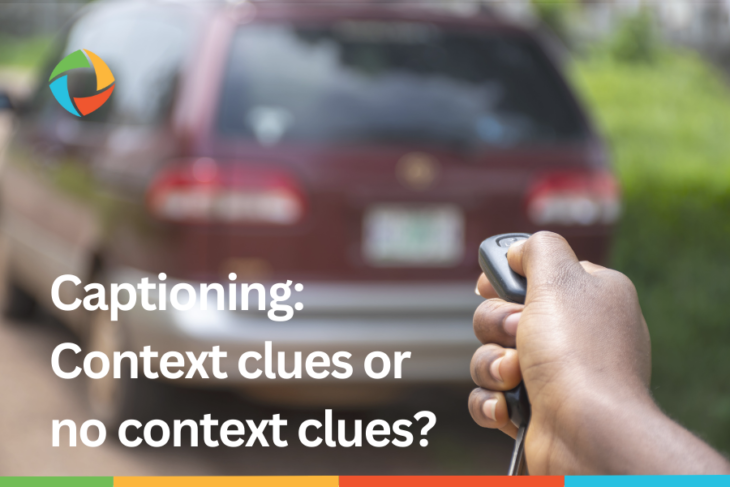Captioning: Context clues or no context clues?
Captioning is a crucial tool that provides accessibility for deaf and hard-of-hearing viewers, as well as non-native speakers and those watching in noisy environments. When creating captions, one important consideration is whether to include context clues or not. In this blog post, we will explore the benefits and drawbacks of both approaches.
Context clues are pieces of information within the audiovisual content that can help viewers better understand the scene and the emotions of the characters. These clues may include background noise, music, or sound effects. Including context clues in captions can provide a more immersive and engaging experience for the viewer. For example, captions that describe the sound of a car engine revving or the patter of rain can help to convey the atmosphere of a scene more effectively than simple dialogue alone.
On the other hand, relying too heavily on context clues can create confusion for some viewers. For example, a deaf viewer may not be able to pick up on subtle background sounds, or a non-native speaker may not be familiar with cultural references. Additionally, some viewers may prefer captions that are concise and to the point, without unnecessary details.
So, which approach is better?
The answer depends on the context and the intended audience. Including context clues in captions can create a more immersive experience for deaf or hard-of-hearing viewers. However, if the intention is to reach a broader audience, such as non-native speakers or those watching in noisy environments, providing concise captions without relying heavily on context clues is more effective.
Another factor to consider is the format of the captions. For example, open captions are burned into the video and cannot be turned off, while closed captions can be turned on and off by the viewer. In some cases, providing context clues in open captions can be helpful, as the viewer has no option to turn them off.
Captioning is an essential tool for providing accessibility to a broad range of viewers. When deciding whether to include context clues in captions, it is important to consider the context and intended audience. While context clues can enhance the viewing experience for some viewers, they may create confusion for others. Ultimately, the best approach will depend on the specific needs and preferences of the target audience. If you need assistance with closed captioning services to ensure your video project has the appropriate context clues, please request a quotation from our team of experts

Jake Drown
Jake is our Vice President and oversees our day-to-day operations. Jake thrives on solving our customer’s problems - if you’re stuck at a roadblock, he’s the one you need to call. As a jack-of-all-trades, you never know what you will find Jake doing on the weekends! He and his family are seasoned travelers and can be found anywhere from a mountain top, a forest, a beach, or even a corn field!


